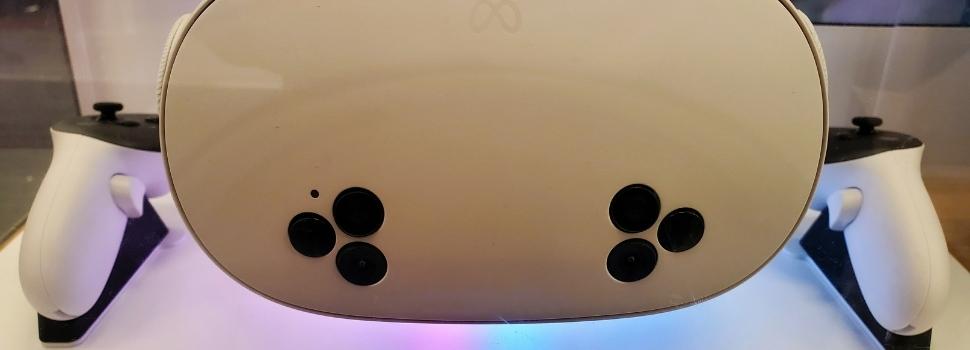Meta Quest 3s Teardown
A Cost-Optimized Approach to VR Innovation
4 Min Read June 9, 2025
TechInsights reveals how Meta reduced VR hardware costs with the Snapdragon XR2 Gen 2 in the Quest 3s.

Meta’s latest VR headset, the Meta Quest 3s, marks a new chapter in affordable immersive technology. Priced at $399 USD, the device represents a strategic balance between performance and cost, making it an attractive entry point into consumer virtual reality.
At the core of the Meta Quest 3s is the Qualcomm Snapdragon XR2 Gen 2 processor (SXR223OP-100-AA), a hexa-core applications processor that accounts for nearly 27% of the total bill of materials (BOM) cost. This processor has a noticeably higher BOM cost impact compared to the Apple R1 chip in Apple’s Vision Pro, a device that targets a far higher price segment.
Supporting this silicon backbone are 8 GB of Micron DRAM and 256 GB of SK hynix NAND storage, alongside a 5.46-inch TFT LCD Chip-in-Glass display with a resolution of 1920 x 3664 pixels. The display’s use of LCD technology (rather than more costly OLED alternatives) keeps costs in check, with the entire display subsystem contributing under 7% of the total BOM cost, a crucial factor in maintaining the Quest 3s’ competitive retail price.
The teardown also revealed an emphasis on sensor functionality, where the total sensor spend is approximately 10 times higher than that of Apple’s Vision Pro. This increased investment likely supports the Quest 3s' intuitive controller tracking and spatial awareness, key for its VR performance. The controllers incorporate Nordic Semiconductor’s nRF52833 SoC, an ARM Cortex-M4-based solution that enables Bluetooth, Zigbee, and Thread communications.
When comparing overall build costs, Meta’s design is remarkably lean. Our analysis shows that the hardware build cost is approximately 80% lower than that of Apple’s Vision Pro, reflecting Meta’s focus on mass-market affordability rather than premium enterprise features. Enclosure and mechanical parts further drive down costs; the main housing, made from PC + ABS-FR(40) and PC + Aluminum, represents a lower materials spend than Apple’s premium frames.
While the Quest 3s design prioritizes cost-efficiency, it does not sacrifice connectivity. The headset supports Wi-Fi 6E, Bluetooth 5.3, and USB Type-C, with a dedicated tri-antenna arrangement to optimize wireless performance between the headset and controllers.
As VR continues to expand into mainstream markets, understanding the design choices and cost trade-offs of devices like the Meta Quest 3s is critical for suppliers, competitors, and ecosystem partners. Meta’s approach to balancing processor power, sensor capabilities, and display economics provides insight into the competitive pressures shaping the future of consumer VR.
Unlock the Meta Quest 3s Teardown
For those evaluating the future of XR devices, components, and supply chains, this exclusive platform content is essential.
Sign in or request access to explore the full deep-dive teardown, including detailed BOM data, competitive benchmarking, and ongoing analysis of Meta’s VR product strategy.










